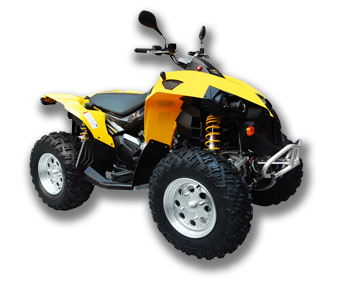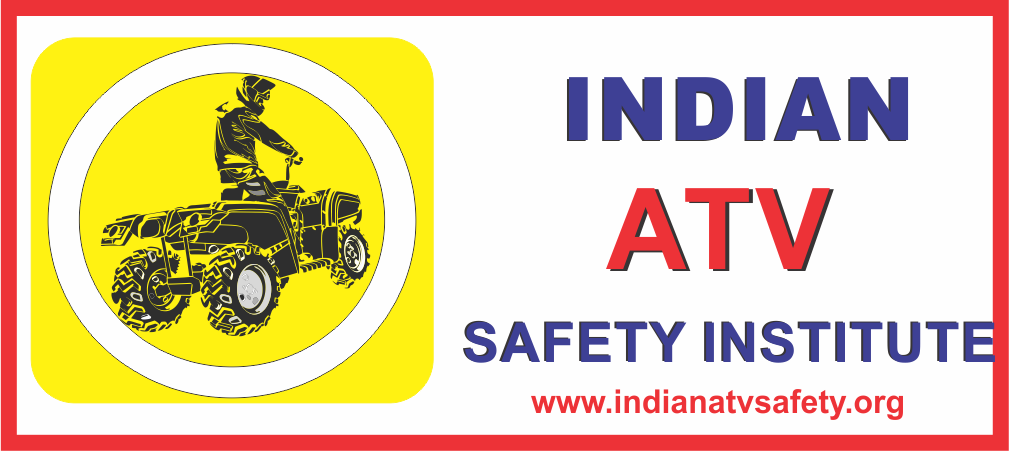BASIC MINIMUM STANDARDS FOR ALL TERRAIN VEHICLE

Safety Standards - ATOAI
ATVs (also known as quad bikes) can be an enjoyable form or outdoor adventure and recreation when operated correctly.
5.1 Adapted from guidelines available on the websites of the European ATV Safety Institute and All-Terrain Vehicle Safety Institute (USA)
5.2 ATVs (also known as quad bikes) can be an enjoyable form or outdoor adventure and recreation when operated correctly. However, serious injury can result from the improper use of ATVs. Although similar to cars or motorcycles, ATVs are different to operate and consequently require a different level of instruction and training. These minimum standards are designed to promote safe practice among operators of ATV tours.
5.3 Guides supervising participants on ATVs should either have attended a driver training course approved by an international ATV institute (such as the European ATV Safety Institute [EISA] or the All-Terrain Vehicle Safety Institute [ASI]) or have completed an in-house training course, which includes the following syllabus:
a) An introduction to the ATV machine, protective clothing, equipment and pre-ride inspections.
b) Range signals, rules and warm up exercises.
c) Controls and starting the engine.
d) Starting out, shifting gears and braking.
e) Turning.
f) Riding strategies/risk awareness.
g) Riding circles and figures of eight.
h) Quicker turns.
i) Sharp turns.
j) Quick stops and swerves.
k).Quick stop in a turn.
l) Riding over obstacles.
m) Safe and responsible driving practices.
n) U-turns and traversing hills.
o) Circuit or Trail Rides.
5.4 In addition, all guides must be familiar with (and assessed on) the operating manual(s) of the ATV(s) which they operate. In addition, all guides must be familiar with (and assessed on) the operating manual(s) of the ATV(s) which they operate.
5.5 ATV operators should always follow the instruction in their Owner’s Manual for recommended operating techniques. All participants of an ATV tour must receive a basic training course before their tour commences. The basic minimum training course will cover the following:
a) To mount and sit on the ATV correctly, locate and operate the controls, and dismount.
b) To use the brakes properly to bring ATV to a smooth, safe stop.
c) To demonstrate basic turning skills by shifting weight properly to maintain balance and avoid the possibility of losing control of ATV.
d) It is very important that all participants pay attention to the instructions provided by their guides.
5.6 ATV Machine: ATVs are subject to considerable wear and tear owing to the nature of their use outdoors. Therefore, only use an ATV from a reputable manufacturer and ensure maintenance is undertaken as per operating manual instructions.
5.7 Helmet: The single most important piece of protective gear riders must wear is a helmet, which can significantly help prevent serious head injuries. Wearing a helmet DOES NOT reduce essential vision and hearing. Operating without an approved motorcycle helmet increases your chances of severe head injury in the event of an accident. Use either a full face or three-quarter (open-face) helmet. Helmets must be properly fitted to the participant – it should be snug and comfortable and securely fastened.
5.8 Face shield or goggles: If driving takes place in areas of dense foliage or jungle, a face shield of goggles should be used. In certain conditions, operating without eye protection can result in an accident and increases your chances of a severe eye injury in the event of an accident. An object such as a rock, branch or even a bug that hits you in the face can distract you: but if you are hit in the eyes, you could be blinded.
5.9 Gloves: Gloves should be of a quality that will help prevent your hands from getting sore, tired or cold, as well as offering protection in the event of a spill/fall. Off-road style gloves, available at leading motorcycle and ATV dealerships, provide the best combination of protection and comfort.They are padded over the knuckles for added protection.
5.10 Footwear: The minimum protective footwear is a pair of ankle covering shoes or boots with low heels to help prevent feet from slipping off the footrests.
5.11 Clothing: It is important to protect your skin from scratches. A long sleeved jersey/sweater, shirt or T-shirt and long trousers are requirements for rider protection.
5.12 Elbow and knee pads: Along with lumbar support belts are highly recommended for ATV operations.
5.13 Before commencing each trip, Guides must carry out an inspection of any ATV to be used by themselves of their customers, before each ride. An inspection will minimise the chance of injury or malfunction, ensure long-term use of your ATV. The ASI uses the following basic T-CLOC checklist: T-CLOC stands for Tires and Wheels, Controls and Cables, Lights and Electrics, Oil and Fuel,Chain/Driveshaft and Chassis)
5.14 The following rules should apply to all participants and guides during an ATV tour:
a) All participants must wear a helmet and other protective equipment.
b) Always keep both hands on the handlebars and both feet on the footrests of ATV during operation. In case using RZR type ATVs make sure passenger and drivers are belted in properly and there is a net in place to protect hands and arms.
c )Avoid paved surfaces – ATVs are designed to be operated off paved roads.
d) Avoid public roads unless the machine has been specifically manufactured for this purpose and complies with the relevant automotive licensing requirements for road use.
e) Never allow riding under the influence of alcohol or drugs.
f) Never carry a passenger unless the machine has been specifically designed and manufactured to do so.
g) Ride only on designated trails and at a safe speed as mandated by the manufacturer of the machine.
h) In case using a side by side ATV with a roll cage then it is imperative that helmets and seat belts are worn at all times. Also, cage nets are essential to prevent accidental arm injuries.
i) In case of expeditions and multi-day trips make sure there is a backup vehicle, qualified mechanic and wireless sets at hand for communication.
5.15 Special arrangements for Children
a) Children under the age of 18 require parental consent to ride ATV and adult supervision.
b) ATVs are NOT toys and children aged below 18 years should only ride the right ATV for their age.
c) Always follow the manufacturer’s minimum age recommendations which will be shown on the ATV or in the Operating Manual.
a) Maintenance history documentation
b) Owners / Operating Manual for each ATV
c) Training and assessment log for all guides
d) First aid certificates for all guides
5.16 A basic risk assessment should be conducted on any trail intended for the use of ATV tours before participants are permitted to use such a route
5.17 A first aid kit must be available and the venue/route itself must be easily accessible. In addition, a detailed emergency procedure must be written that includes contact numbers of the available emergency services. Evacuation routes and emergency procedures must also be included in the companies risk assessment.
